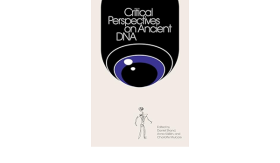Contributors
List of Figures
Figure 2.1
“Average linkage tree for 42 populations.” Used with permission of Princeton University Press, from Luigi L. Cavalli-Sforza, Paolo Menozzi, and Alberto Piazza, The History and Geography of Human Genes (Princeton, NJ: Princeton University Press, 1994), 78. Permission conveyed through Copyright Clearance Center Inc.
Figure 2.2
ADMIXTURE bar plot. David H. Alexander et al., Admixture 1.3. Software Manual (2020), https://dalexander.github.io/admixture/admixture-manual.pdf.
Figure 2.3
Representation of the first genome-wide analysis of global human genetic diversity with STRUCTURE. From Noah A. Rosenberg et al., “Genetic Structure of Human Population,” Science 298, no. 5602 (2002): 2382. Reprinted with permission from AAAS.
Figure 2.4
“Three scenarios that give indistinguishable ADMIXTURE results.” Daniel J. Lawson, Lucy van Dorp, and Daniel Falush, “A Tutorial on How Not to Over-Interpret STRUCTURE and ADMIXTURE Bar Plots,” Nature Communications 9, no. 3258 (2018): 3.
Figure 2.5
Cluster diagram with K = 15. Dienekes Pontikos, “Human Genetic Variation: The First ? Components,” Diekenes’ Anthropology Blog, December 15, 2010, http://dienekes.blogspot.com/2010/12/human-genetic-variation-first.html.
Figure 2.6
Dendrogram of hierarchical clustering of the fifteen components. Dienekes Pontikos, “Human Genetic Variation: The First ? Components,” Diekenes’ Anthropology Blog, December 15, 2010, http://dienekes.blogspot.com/2010/12/human-genetic-variation-first.html.
Figure 2.7
Clustering analyses of modern DNA (left) and aDNA (right).36 Mário Vicente and Carina M. Schlebusch, “African Population History: An Ancient DNA Perspective,” Current Opinion in Genetics & Development 62 (2020): 10.
Figure 2.8
“A possible model for gene flow events in the late Pleistocene.” Kay Prüfer et al., “The Complete Genome Sequence of a Neanderthal from the Altai Mountains,” Nature 505, no. 7481 (2014): 48. Reproduced with permission from SNCSC.
Figure 2.9
“Refined demography of archaic and modern humans.” Martin Kuhlwilm et al., “Ancient Gene Flow from Early Modern Humans into Eastern Neanderthals,” Nature 530, no. 7591 (2016): 432. Reproduced with permission from SNCSC.
Figure 2.10
“Separation of modern human and archaic ancestries in the past one million years.” Anders Bergström et al., “Origins of Modern Human Ancestry,” Nature 590, no. 7845 (2021): 234. Reproduced with permission from SNCSC.
Figure 2.11
(Left): The inferred maximum likelihood tree of human phylogeny relating modern and archaic humans without considering gene flow between them. (Right): The same tree allowing for ten admixture events between continental groups of modern humans on the basis of TREEMIX. Joseph K. Pickrell and Jonathan K. Pritchard, “Inference of Population Splits and Mixtures from Genome-Wide Allele Frequency Data,” PLoS Genetics 8, no. 11 (2012): 8, 10.
Figure 5.1
Author studying the Neanderthal reconstructions in the Musée National de Préhistoire, Les Eyzies, France.
Figure 5.2
Mr. 4% at the Neanderthal Museum in Mettmann, Germany.
Figure 5.3
The Neanderthal as depicted (a) by German paleoanthropologist Hermann Schaaffhausen in 1876/1888, and (b) by Czech artist Frank Kupta in 1909.
Figure 5.4
“Werde Teil der Menschenfamilie.” Image/postcard on the website of the Neanderthal Museum in Mettmann, Germany.
Figure 5.5
Lucy as depicted at the Neanderthal Museum in Mettmann (left) and at the Musée National de Préhistoire, Les Eyzies (right).
Figure 5.6
Turkana boy as depicted at the Neanderthal Museum in Mettmann (left) and at the Musée National de Préhistoire, Les Eyzies (right).
Critical Perspectives on Ancient DNA: An Introduction
Daniel Strand and Anna Källén
In recent years, an intense focus on DNA has had a major impact on archaeology and our general knowledge about the ancient past.1 While ancient DNA, or aDNA, has been extracted and analyzed since the late 1980s, the use of bioinformatics and innovations such as next-generation sequencing has from 2015 onward resulted in a dramatic increase in the number of analyzed samples. Although high-profile research papers on female Viking warriors and black Neolithic Europeans have made archaeogenetics famous beyond the corridors of academia, the field can be said to have got its definite public breakthrough in the fall of 2022, when the Nobel Prize in Medicine was awarded to Swedish paleogeneticist Svante Pääbo.
The hard-science muscle of archaeogenetics has certainly brought new resources, much attention, and a renewed confidence to research and knowledge claims within archaeology. Conversely, one might argue that the allure of archaeology has endowed genetic research with a profitable aura of adventure and mystique. In this sense, the rapid development of the field has been a win-win enterprise for archaeology and genetics. But what are the broader consequences of this development when it comes to our understanding of the ancient past? What are the social and political effects of a genetic conceptualization of past people’s identities and our present relations to them? What qualitative changes have the recent methodological developments in genomics brought to our knowledge of prehistory?





















